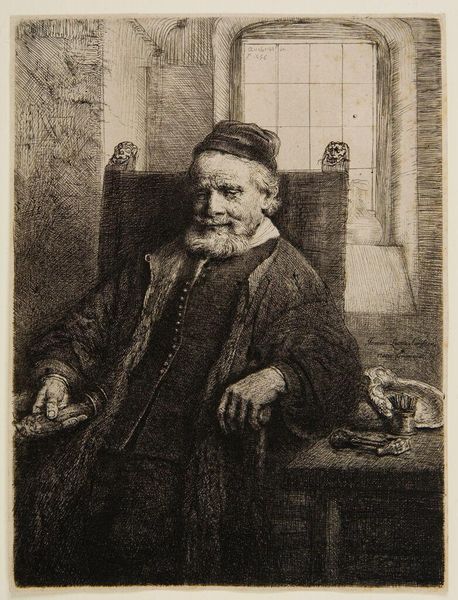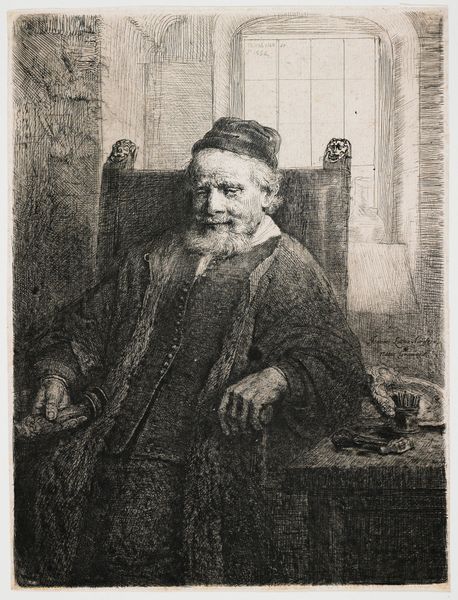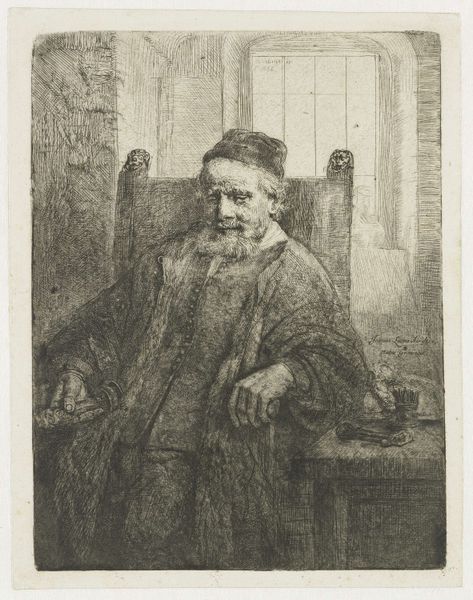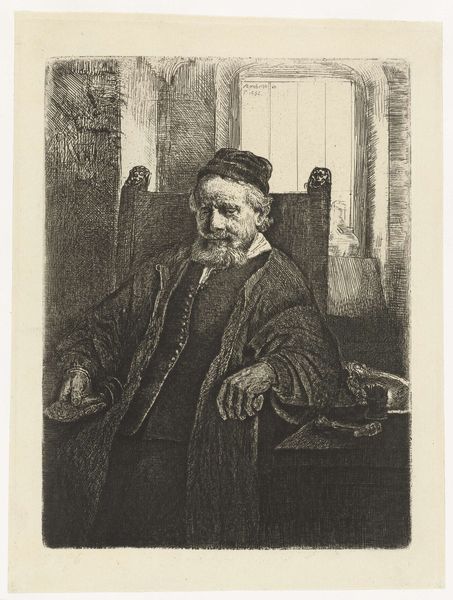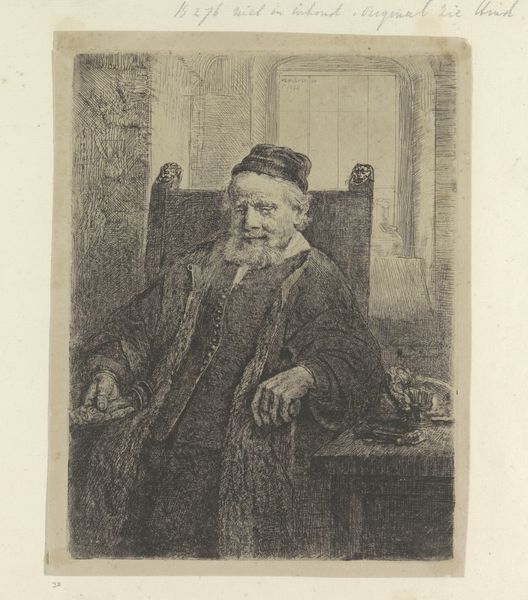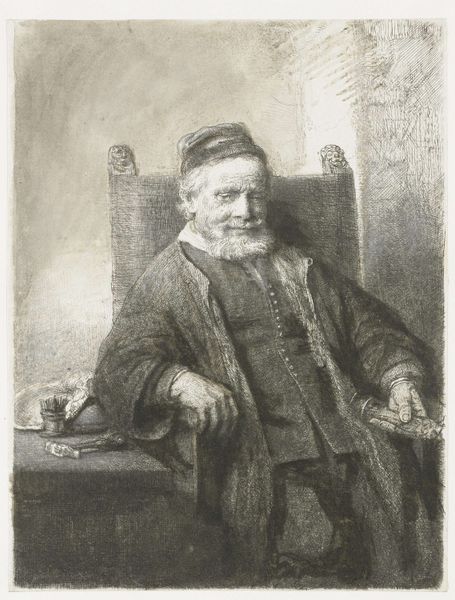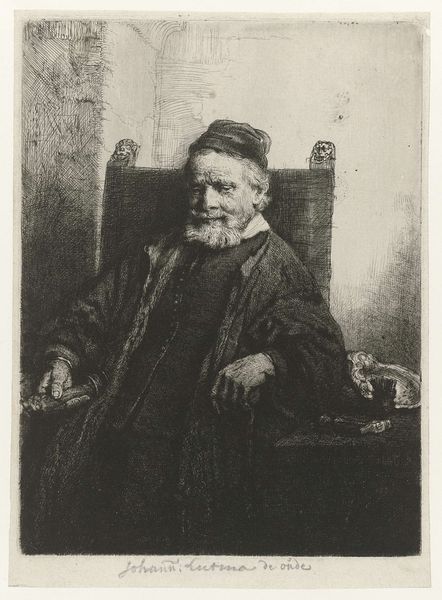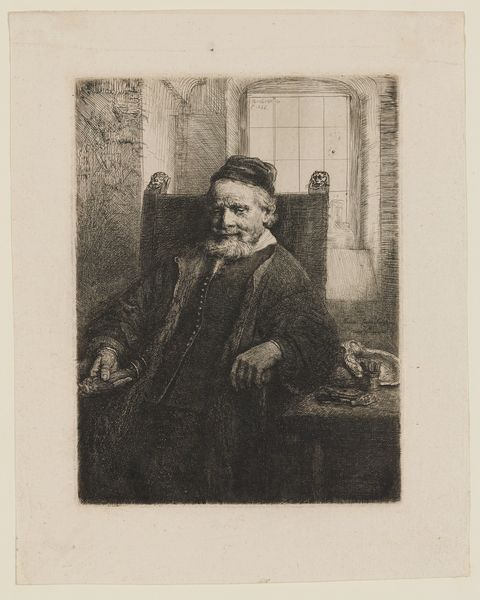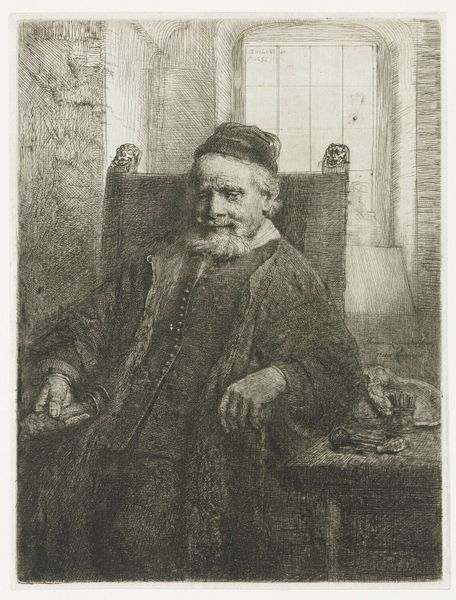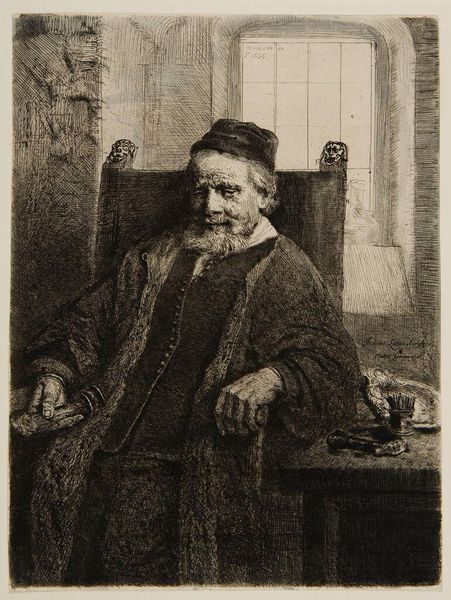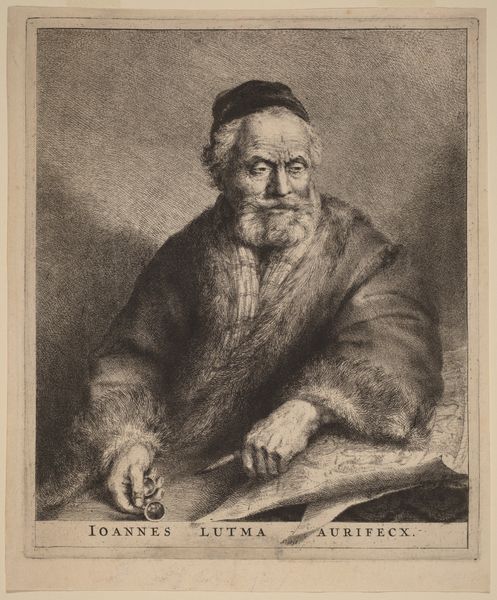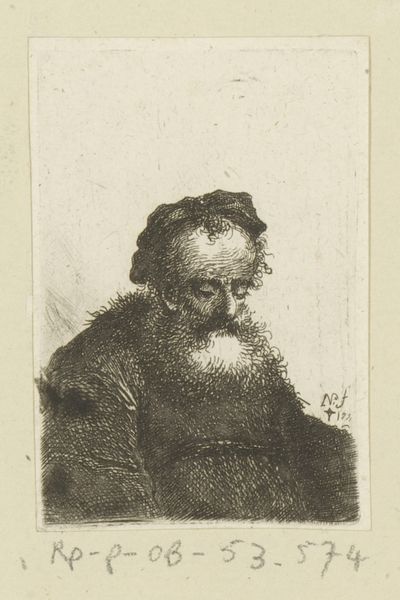
drawing, print, etching
#
portrait
#
drawing
#
dutch-golden-age
# print
#
etching
#
portrait reference
#
men
Dimensions: sheet: 7 7/8 x 5 7/8 in. (20 x 15 cm)
Copyright: Public Domain
Editor: Here we have Rembrandt van Rijn's "Jan Lutma, goldsmith," an etching and drypoint print from 1656. It's such an intimate portrayal; I am drawn to the rich blacks and whites and Rembrandt’s use of shadow that give this older gentleman’s face so much character. What do you see when you look at this piece? Curator: Immediately, my attention is directed to the use of line. Consider the contrast: bold, decisive strokes define the contours of Lutma’s figure and chair, while a more delicate, almost hesitant, web of lines describes the background and architectural details. Does this variation in linework suggest anything to you about Rembrandt’s focus, or perhaps the hierarchy of elements within the composition? Editor: It does! It almost feels like he's isolating Lutma in his own personal space, separate from his surroundings. Is it meant to keep us in the scene or almost push us away with such an isolating choice? Curator: Perhaps both simultaneously. Consider also the strategic placement of light. Notice how it illuminates Lutma’s face and hands, drawing our eye to these key areas of expression and craft. Observe how the texture of the etching is not only visual, but implied: do you imagine the feeling of the rough paper and how it absorbed the ink? This interaction between light and shadow, form and texture, creates a visually compelling surface that rewards close scrutiny. Editor: I love the intensity and the contrast of it all; the deeper shades give an intimate look into Lutma’s life. This almost becomes more than a formal study. I feel like there's so much narrative communicated formally! Curator: Precisely! Rembrandt manipulates the formal elements of the print to convey character and psychological depth, making it a fascinating subject to explore and dissect.
Comments
No comments
Be the first to comment and join the conversation on the ultimate creative platform.
